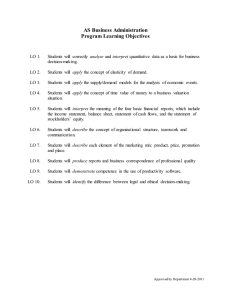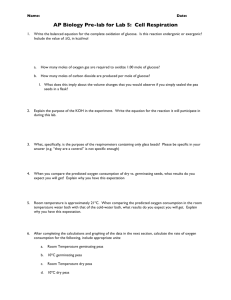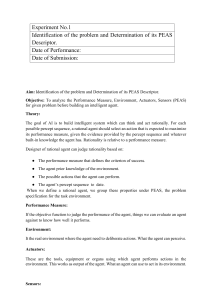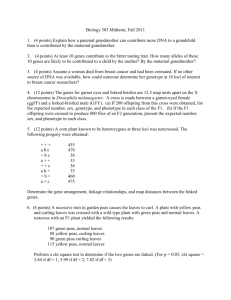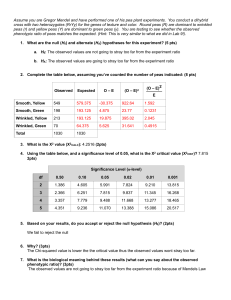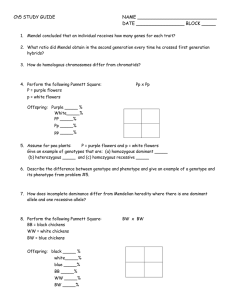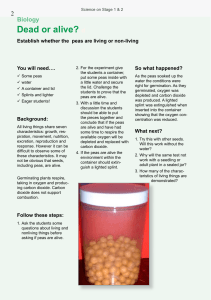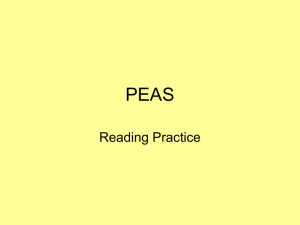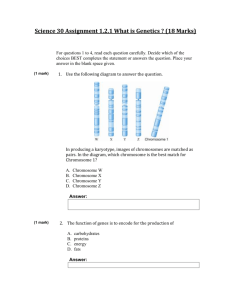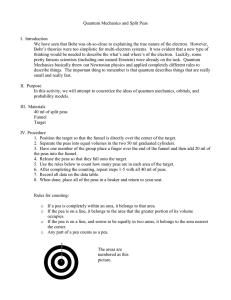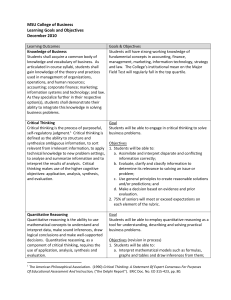PEAS Framework: Critical Thinking for Business Students
advertisement
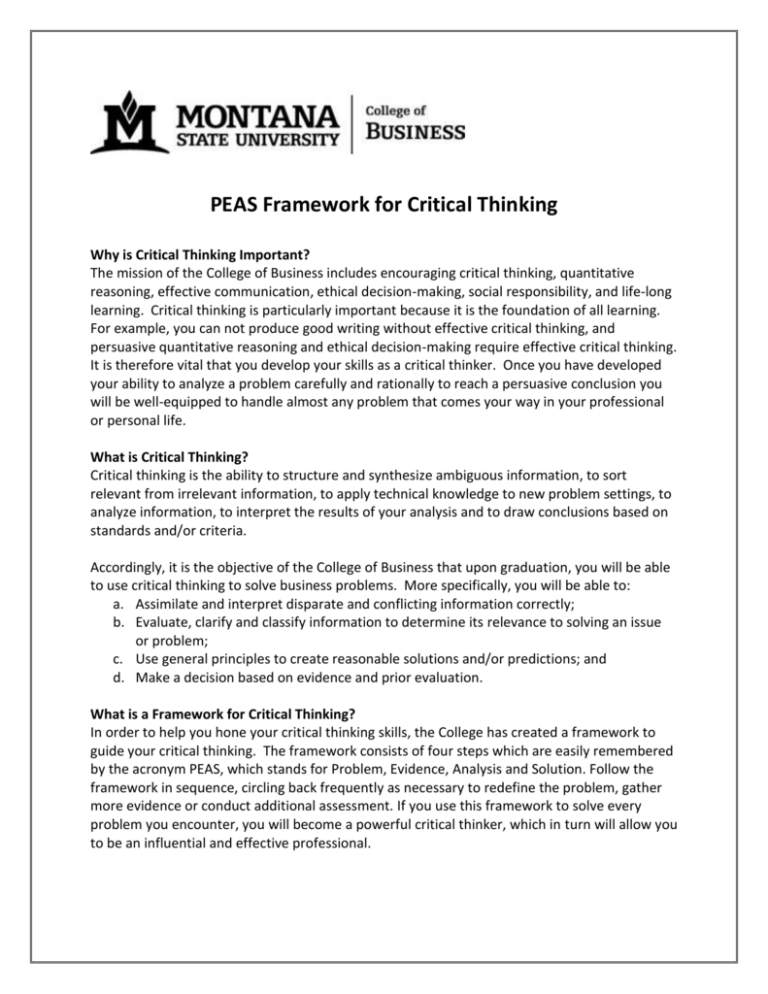
PEAS Framework for Critical Thinking Why is Critical Thinking Important? The mission of the College of Business includes encouraging critical thinking, quantitative reasoning, effective communication, ethical decision-making, social responsibility, and life-long learning. Critical thinking is particularly important because it is the foundation of all learning. For example, you can not produce good writing without effective critical thinking, and persuasive quantitative reasoning and ethical decision-making require effective critical thinking. It is therefore vital that you develop your skills as a critical thinker. Once you have developed your ability to analyze a problem carefully and rationally to reach a persuasive conclusion you will be well-equipped to handle almost any problem that comes your way in your professional or personal life. What is Critical Thinking? Critical thinking is the ability to structure and synthesize ambiguous information, to sort relevant from irrelevant information, to apply technical knowledge to new problem settings, to analyze information, to interpret the results of your analysis and to draw conclusions based on standards and/or criteria. Accordingly, it is the objective of the College of Business that upon graduation, you will be able to use critical thinking to solve business problems. More specifically, you will be able to: a. Assimilate and interpret disparate and conflicting information correctly; b. Evaluate, clarify and classify information to determine its relevance to solving an issue or problem; c. Use general principles to create reasonable solutions and/or predictions; and d. Make a decision based on evidence and prior evaluation. What is a Framework for Critical Thinking? In order to help you hone your critical thinking skills, the College has created a framework to guide your critical thinking. The framework consists of four steps which are easily remembered by the acronym PEAS, which stands for Problem, Evidence, Analysis and Solution. Follow the framework in sequence, circling back frequently as necessary to redefine the problem, gather more evidence or conduct additional assessment. If you use this framework to solve every problem you encounter, you will become a powerful critical thinker, which in turn will allow you to be an influential and effective professional. PEAS Framework for Critical Thinking Follow each step in sequence, circling back frequently to check your assumptions and make sure your analysis is complete. Problem Define the problem to be solved. What question(s) do you have to answer? Be careful! It is not always obvious what is the real problem and what is merely a symptom of the problem. Evidence Identify relevant facts and data. Ask yourself: How do I know these are facts rather than opinions, inferences or assumptions? From what perspective am I viewing the evidence? Are there other perspectives from which to view the evidence? What additional information do I need? Analysis Generate and evaluate three or four alternative solutions to the problem in light of the evidence and relevant rules, theories, models, concepts, techniques, perspectives or guidelines. Ask yourself: Does each alternative really address the problem to be solved? How well does the evidence support each alternative? Do I need to find more or different evidence or data to help me generate and/or assess alternatives? What are the strengths and weaknesses of each alternative? What assumptions and inferences am I making? Are these justified? What are the practical implications of each alternative? What criteria will I use to determine which is the optimal alternative? Solution Choose the optimal solution. Test your solution to make sure it addresses the problem, is based on good evidence, does not ignore relevant facts and data, and meets your decision-making criteria. Explain why your solution is better than the alternatives. You may wish to use the following chart to help you organize your evaluation of the relative merits of each alternative solution to the problem. Possible Solutions Solution 1: Solution 2: Solution 3: Solution 4: Pros Cons PEAS Framework for Critical Thinking Montana State University College of Business
